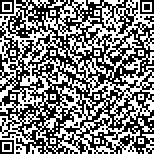下载中心
优秀审稿专家
优秀论文
相关链接
摘要

热红外遥感器主要使用遥感手段感应地物热红外辐射信息,可用于识别地物和反演地表温度参数。由于热红外遥感器在夜间的工作工作能力优于可见光,且环境适应性好,已广泛应用于资源调查、生态环境监测、灾害评估以及军事目标探测识别等领域。随着工程应用及科学研究的不断深入,提升热红外遥感器的探测灵敏度需求日益迫切。热红外遥感器的温度灵敏度与遥感器自身收集目标能量的能力和遥感器系统噪声特性相关。其中,遥感器系统噪声由光子噪声(景物辐射和遥感器本体背景辐射共同到达焦平面处的光子的波动)、探测器组件噪声、电路噪声共同组成。在成像谱段、积分时间、探测器及视频电路参数固定的条件下,光学系统降温能够减小其自身背景辐射,降低光子噪声,提升系统的温度灵敏度。本文通过仿真分析量化了光学系统辐射与光路设计、光学系统工作温度以及探测器冷屏设置的关系,并以某热红外遥感器为例验证了光学系统温度对热红外遥感器温度灵敏度的影响。文中的仿真分析方法和验证情况对于热红外遥感器的设计研制有参考意义。
TIR remote sensing systems mainly use remote sensing means to sense the thermal infrared radiation difference of ground objects, which can be used to identify ground objects and retrieve surface temperature parameters. TIR remote sensing detecting technology has been widely used in resource investigation, ecological environment monitoring, disaster assessment and military target detection and recognition because of its excellent working ability in bad weather and night. With the deepening of engineering application and scientific research, it is urgent to improve the thermal sensitivity of infrared remote sensors. In the design of TIR remote sensing system, for the application needs of detection capability, the target, background need to consider the three main factors of the system. Noise Equivalent Temperature Difference (NETD) is an important indicator of representing the temperature sensitivity of the remote sensing system. NETD could be affected by the optical system radiation on the TIR remote sensing system.The influence of NETD by optical system radiation could be analyzed by the method of the number of noise electron or by the method of D* of the detector. The noise of the remote sensor system consists of photon noise (scene radiation and the fluctuation of the main background radiation reaching the focal plane), detector assembly noise and circuit noise. Under the condition of fixed imaging spectrum, integral time, detector and video circuit parameters, the cryogenic optical system can reduce its own radiation, reduce the photon noise, and improve the temperature sensitivity of the system. This paper quantified the relationship between optical system radiation and optical path design, operating temperature and the temperature sensitivity of thermal infrared remote sensing camera. The simulation method uses the software TracePro to conduct light tracing, analyzes the irradiance distribution of the optical system and the optical machine structure at the respective working temperature, and finally accumulates all the components to obtain the total radiation amount on the detector. The working temperature of optical system will affect the temperature sensitivity of the system. When the optical system radiation drops to lower than 1/10 of the target signal radiation, it could be regarded as a background-limiting detecting system, where the optical system radiation impact on the temperature sensitivity of the thermal infrared remote sensor can be ignored. In the load design, when the detector type is fixed, the sensitivity of load detection can be improved by reducing the optical system temperature. In order to verify the influence of changing the temperature of the optical system on the temperature sensitivity of the thermal infrared remote sensor, an airborne infrared remote sensor was designed and developed. The working temperature of the optical lens of the infrared remote sensor was changed form 313 K to 293 K, and NETD was tested. With the decrease of optical system temperature, the temperature sensitivity is improved. So the performance improvement was verified by the NETD testing. With the limitation of atmospheric temperature of airborne thermal infrared remote sensor below the dew point, this test did not carry out the performance verification of the temperature below 293 K. NETD test of the remote sensor with the lower temperature work on the deep low temperature working in the vacuum tank will be done in future. The development of this study is important for the design and development of cryogenic optical TIR remote sensing systems.

